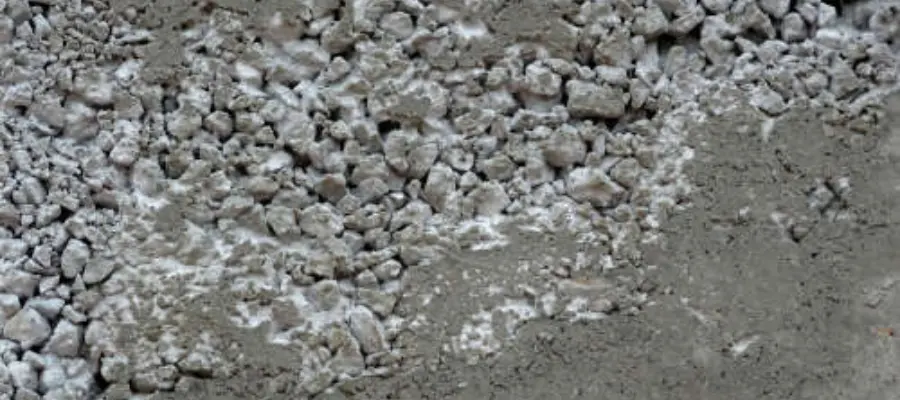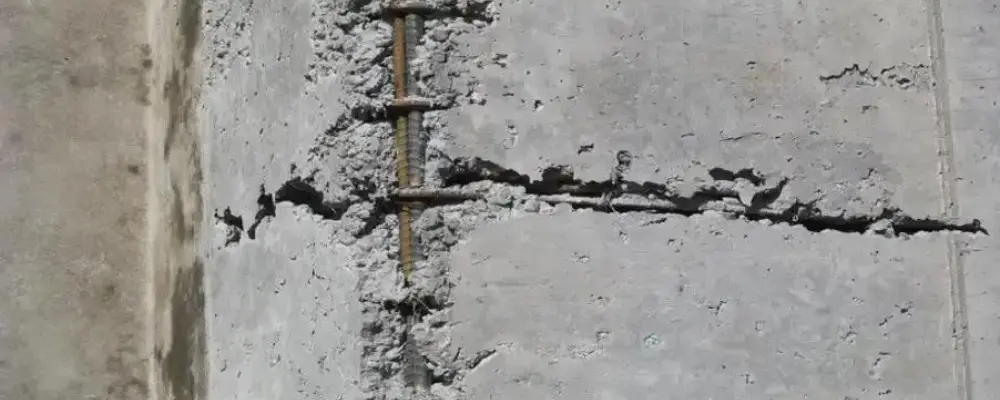Have you ever seen honey bee nest-like occurrences in the finished concrete surfaces? It is termed ‘honeycomb in concrete.’ It occurs when the concrete cannot fill the entire space inside the formwork during construction, leaving air voids.
In today’s blog of Brick & Bolt, you are going to understand what honeycomb in concrete is, what its causes are, how to prevent it, and most importantly, how to repair it effectively.
What is Honeycomb Concrete?
Honeycombs in concrete are defined as hollow spaces and cavities left in concrete mass on the finished concrete surface or inside the mass due to incomplete filling of the formwork or improper compaction of the concrete. By using the best cement for concrete can ensure that this occurrence is avoided.
What are the Different Types of Honeycomb in Concrete?
Honeycombing in concrete can be categorised into three major types based on its size.
1. Small Honeycombs
These are due to small voids or surface irregularities that reside after the concrete is poured and compacted. Usually, these will be less than 10mm in size. These small honeycombs are generally not structural problems but do influence the aesthetic appearance of the finished product.
2. Medium-sized Honeycombs
Medium-sized honeycombs may be caused by the lack of sufficient vibration of the concrete during compaction or the improper installation of the formwork. They typically vary in size between 10mm to 50mm. These honeycombs can reduce the strength and durability of the concrete and may have to be treated in remedial works to ensure that the structural value of the finished concrete structure is sound.
3. Large Honeycombs
Large honeycombs in concrete are caused by problems such as inadequate formwork, improper placing or compaction, and failure to remove any debris or obstruction from the formwork before pouring the concrete. Normally large honeycombs are greater than 50mm in size. Large honeycombs must have to be widely repaired or replaced because they greatly compromise the structural strength of the concrete.
What are the Causes of Honeycomb in Concrete?
Several reasons generally form honeycomb in concrete. The following are some of the major causes of honeycomb in concrete:
- Insufficient vibration: Insufficient or improper vibration during concrete placement can result in air voids and poor consolidation, causing honeycomb in concrete.
- Improper mix design: Concrete mixtures with inadequate workability or improper aggregate gradation can lead to honeycombing. Using the right proportion of cement and sand is crucial for achieving the proper mix design.
- Tightly spaced reinforcement: Closely spaced steel reinforcement bars obstruct proper concrete flow and consolidation. While reinforced cement concrete has many advantages, improper placement of steel reinforcement can lead to honeycombing issues.
- Poor formwork design: Improperly designed or poorly maintained forms can let concrete to escape, creating voids.
- Segregation of aggregates: Separation of coarse aggregates from the cement paste during placement can result in honeycombing.
- Improper curing: If concrete curing is not done properly, concrete can develop honeycombing. Proper curing is necessary to guarantee the concrete acquires strength and durability.

How to Prevent Honeycomb in Concrete?
Always prevention is better than cure when it comes to honeycomb concrete. Here are some effective strategies to minimise the risk of honeycombing:
- Right mix design: Make sure the concrete mix has good workability and aggregate gradation. Understanding different types of concrete used in construction can help in selecting the appropriate mix for your project, reducing the risk of honeycombing.
- Proper and effective vibration: Use proper vibration technique and equipment to remove trapped air bubbles from concrete mixtures.
- Spacing in reinforcement: Avoid reinforcement bar congestion and ensure proper spacing.
- Formwork quality: Use well-designed and clean formwork.
- Proper placement techniques: Employ proper methods of concrete placing, including appropriate rates of pouring and lift heights.
- Curing: Allow the concrete to adequately cure before formwork removal.
- Quality control: There must be very strict quality control at all stages of construction.
Best Practices for Honeycomb Concrete Repair
Generally, honeycombing in concrete repair procedure involves the following stages:
1. Surface Preparation
You can take out loose or deteriorated concrete with a wire brush or hammer. Make sure the repair area is free from dust, dirt, and debris. Avoid the application of heavy machinery, such as electrical chippers, near the honeycomb region to prevent damage to the sound concrete.
2. Dry Pack Method
This can be used for repairing very small areas and shallow honeycombs in concrete. Prepare a stiff plasticity mortar of ratio 1:3 cement and fine sand with ample water. Pack this mixture with solid pressure on to the damaged area in layers, and finish it with flushing to the rest of the concrete to get a smooth, unnoticeable honeycomb concrete repair.
3. Epoxy Injection
Small spaces and cracks can be filled with a suitable substance, like non-shrinkage epoxy grout, using a mechanical injection pressure pump.
4. Shotcrete Application
For extensive honeycombing or large-scale repairs, shotcrete, also called sprayed concrete, can be the best option. Prepare the surface by extracting loose material and cleaning it thoroughly. Apply shotcrete in layers, ensuring proper compaction, and finish and cure the repaired area as required.
After filling the honeycomb, wait for the required time for it to dry. Remove formworks after 12 hours of repair based on the type of material used and environmental conditions. Cure repair material to achieve sufficient strength. Later, the texture and colour required to match the surrounding concrete will be provided, and aesthetics will be maintained.
Although honeycomb in concrete is considered a common problem in construction, its effects can be minimised. With proper knowledge about the techniques of prevention and repair, these works can ensure the durability and performance of concrete structures. Effective remedial measures can ensure concrete durability and performance in structures by addressing the causes of honeycombs in the concrete. Remember, you can repair small-scale honeycomb concrete using appropriate methods. But if it’s deeper and large-scale, always consider rebuilding so that you can achieve continued safety and durability in your built environment. If you are also seeking long-lasting and durable construction, Brick & Bolt is here as one of the top construction service providers in Chennai. Brick & Bolt provides a vast range of expertise to your project. They can also assist you in selecting the right construction materials and house floor plans. In addition, you can check your building cost estimation by using our exclusive building cost estimator tool.

